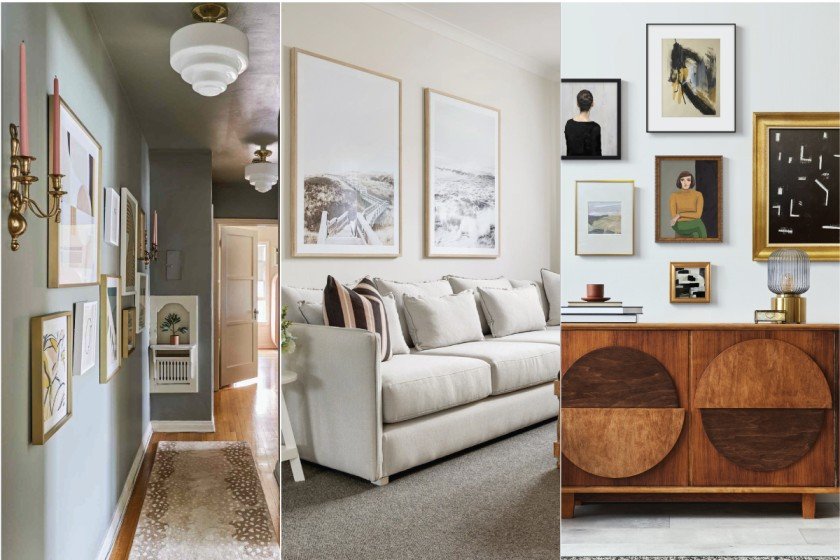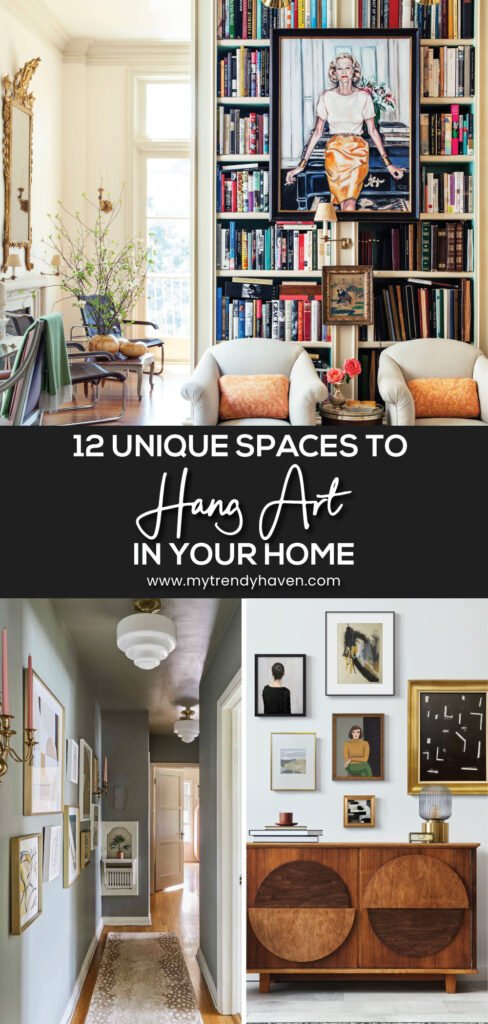
Decorating a home or office feels complete once art finds its place. Walls look warmer, rooms feel personal, and spaces tell stories through the images, colors, and textures we display. Art does not always belong on the biggest empty wall.
It can also live in small corners, above furniture, or even in unexpected places. The right spot makes a simple print or painting stand out.
This guide shares twelve practical and stylish places where art can hang. Each idea is easy to try and works for both small and large homes.
1. Above the Sofa
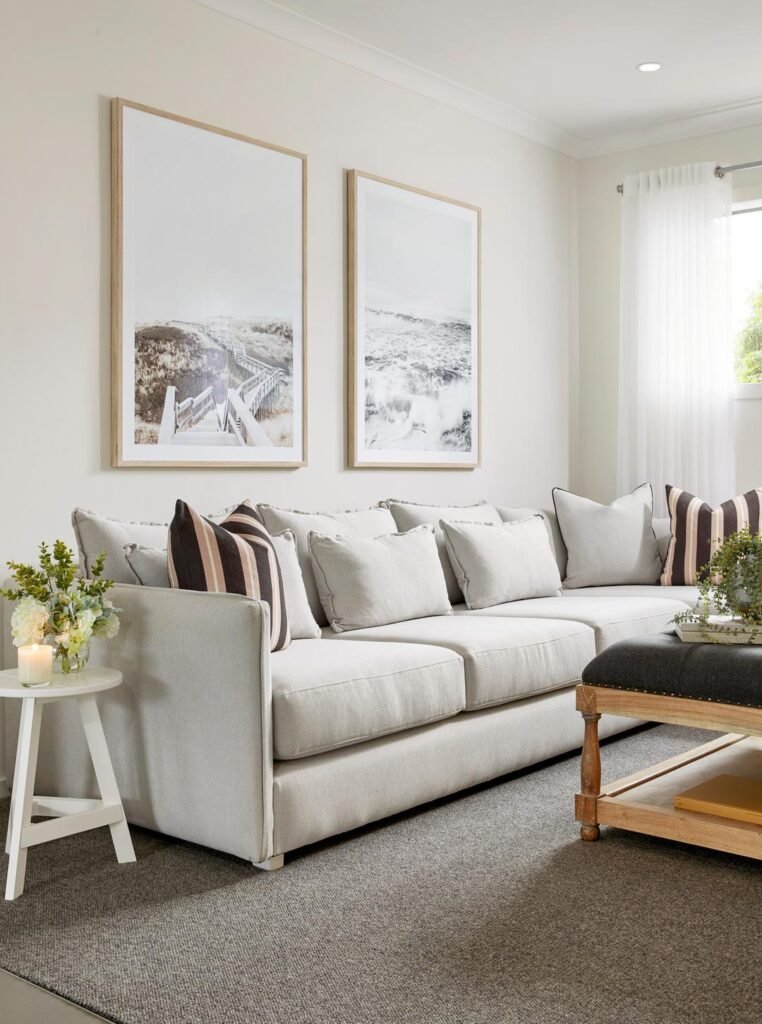
The wall behind the sofa offers a natural frame for artwork. A single large canvas can act as the centerpiece of the living room. A row of smaller prints can form a gallery wall that stretches across the couch length.
Keep the bottom edge of the art about six to eight inches above the back of the sofa. This distance gives balance and keeps the artwork from looking too high or too low.
Bold colors work well here because guests often notice this wall first. A soft landscape or abstract piece can create a calm mood, while bright modern art can add energy. The key is to match the art with the sofa’s size. A tiny frame on a long sofa wall looks lost. A big canvas brings harmony.
2. Above the Bed
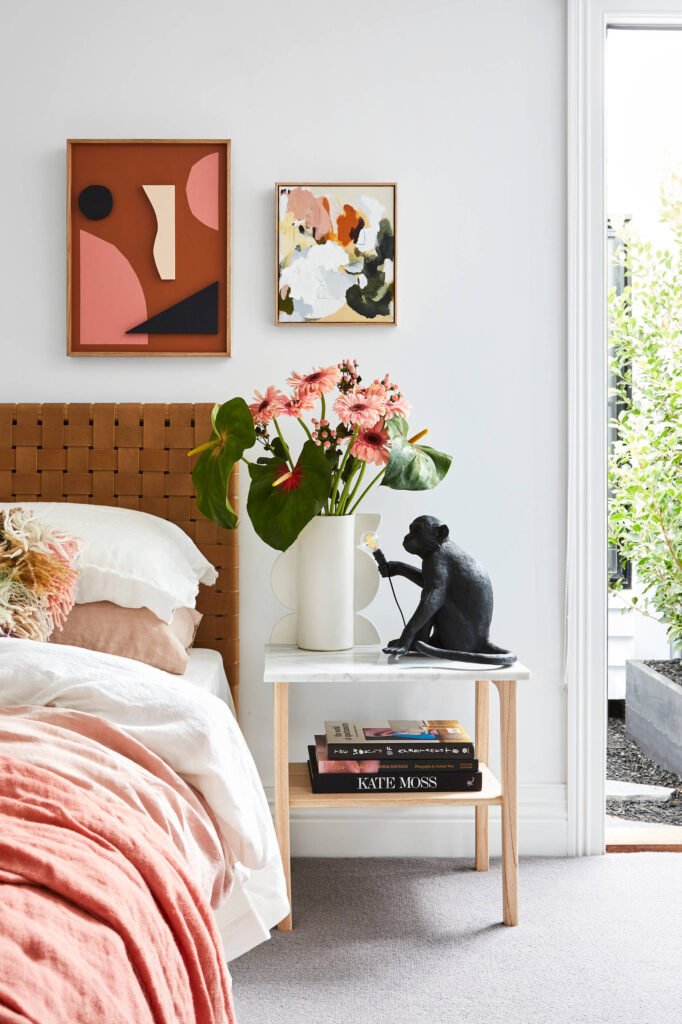
Bedrooms feel cozier with art over the bed. This spot becomes a focal point, drawing the eye upward and framing the sleeping area. A wide horizontal piece works well above a headboard. For smaller beds, two or three vertical frames can look balanced.
Nature scenes or calming prints often suit this area because bedrooms should feel restful. Black-and-white photography also adds style without being too busy. If the headboard is tall, keep the art closer to the ceiling so it does not look squeezed. The aim is to balance comfort and beauty.
3. Hallway Walls
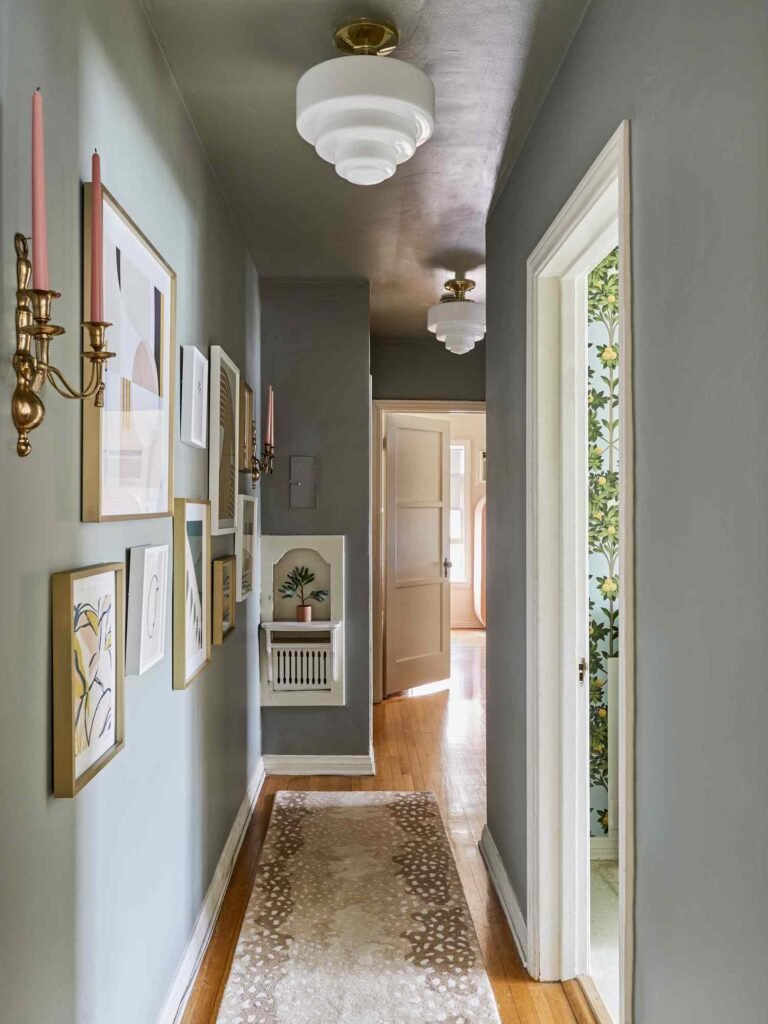
Long hallways often feel plain. Art can break the monotony and guide movement through the space. Several small frames placed in a straight line work like a visual path. Large vertical pieces can also fill narrow walls at the end of the hall.
This area is perfect for family photos, travel shots, or themed collections. Hallways act like a gallery at home where personal memories or favorite prints shine. Good lighting matters here since hallways are often dim. A spotlight or wall sconce can make the art stand out.
4. Above a Console Table
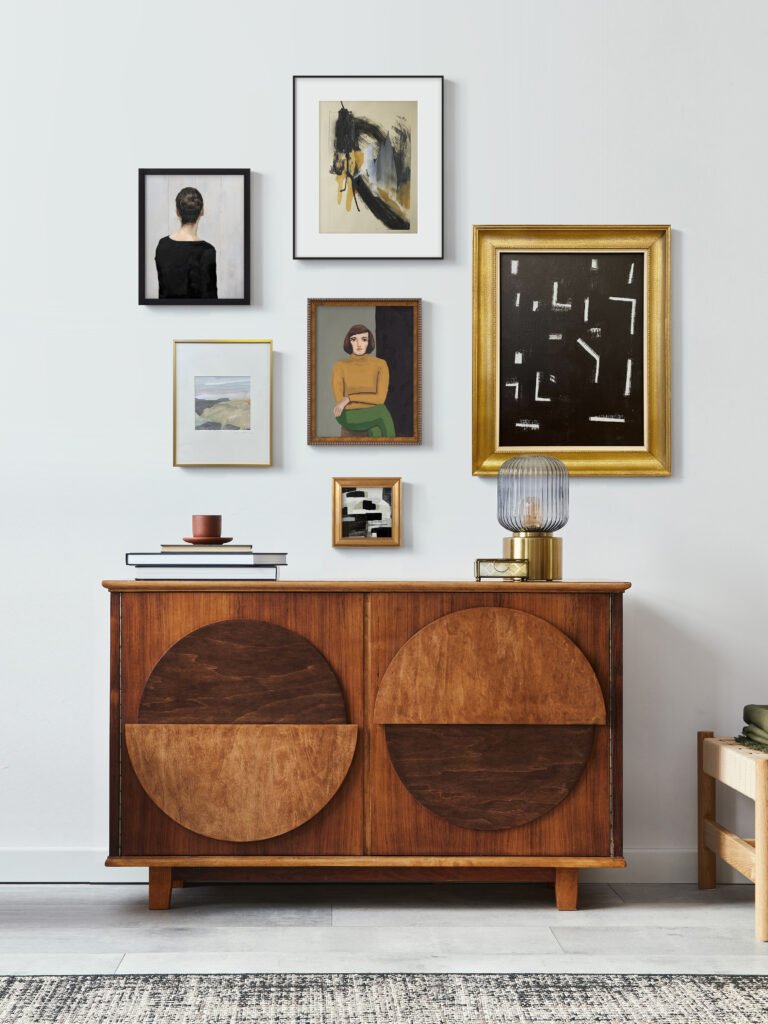
Console tables usually sit in entryways or behind sofas. Hanging art above them makes the space look complete. The table and artwork together form a layered design. A mirror works here too, but a bold art piece adds more personality.
Pick art that matches the purpose of the space. For an entryway, a cheerful or welcoming print makes guests feel comfortable. For a living room console, abstract art or a landscape might suit better. Add small objects like lamps or plants on the table. Together with the art, they create a stylish vignette.
5. Kitchen Walls
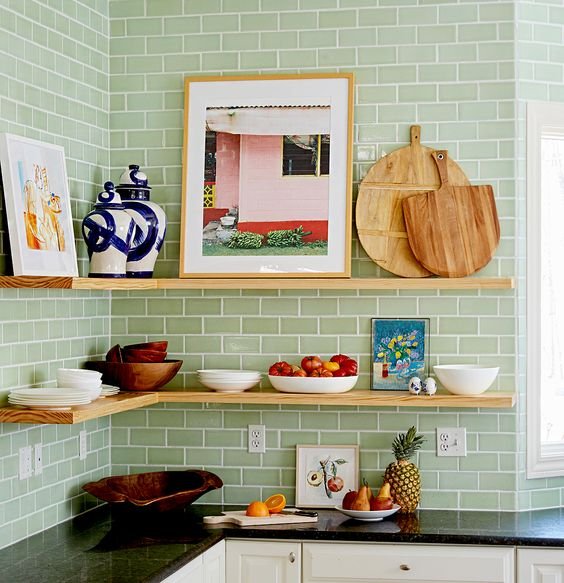
Kitchens are often overlooked for art, but they benefit from creative touches. Small framed prints near the dining nook or above open counter space can brighten the room. A gallery of food-related illustrations, vintage posters, or simple line art suits this space well.
Keep in mind heat and moisture. Avoid hanging expensive or delicate pieces near the stove or sink. Instead, choose washable prints or framed posters. Artwork here adds charm and makes the kitchen feel like part of the home, not just a place to cook.
6. Above the Fireplace
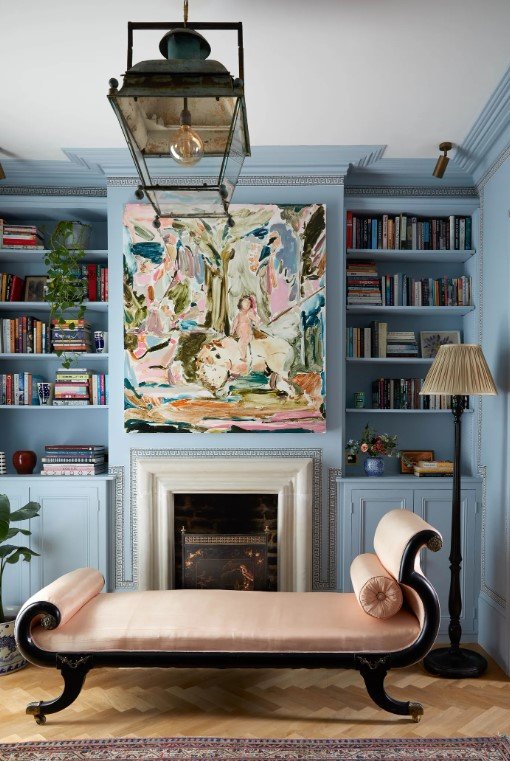
A fireplace naturally acts as a center point in the room. Hanging art above it enhances this focus. A single strong piece fits perfectly, or you can arrange a set of smaller works. The art should be about the same width as the mantel or slightly smaller for balance.
This area works best for bold designs. A dramatic painting, large photograph, or textured piece of art can match the strength of the fireplace. Keep the bottom of the frame around six to eight inches above the mantel to avoid crowding.
7. Staircase Walls
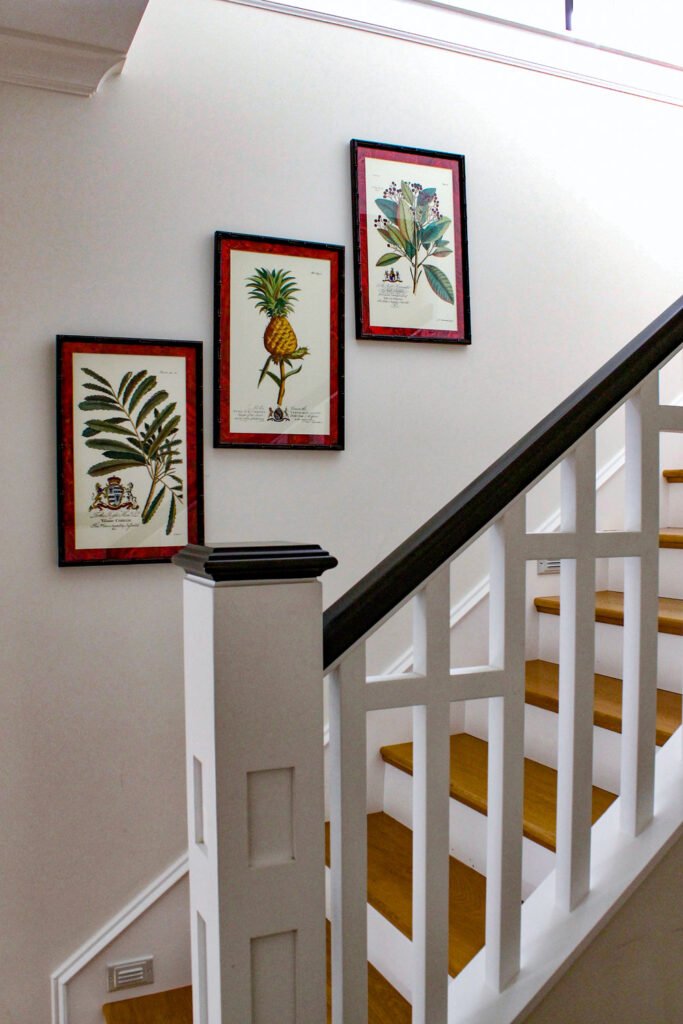
The wall along a staircase offers a tall and dynamic space for art. A series of frames that follow the slope of the stairs looks striking. It creates movement and rhythm as people go up and down.
Family portraits work well here because the staircase is often a personal space. Mixing frame sizes adds interest. Place larger ones in the middle and smaller ones along the edges. Staircase lighting is important too. A well-lit display brings warmth to what might otherwise feel like a dark corner.
8. Bathroom
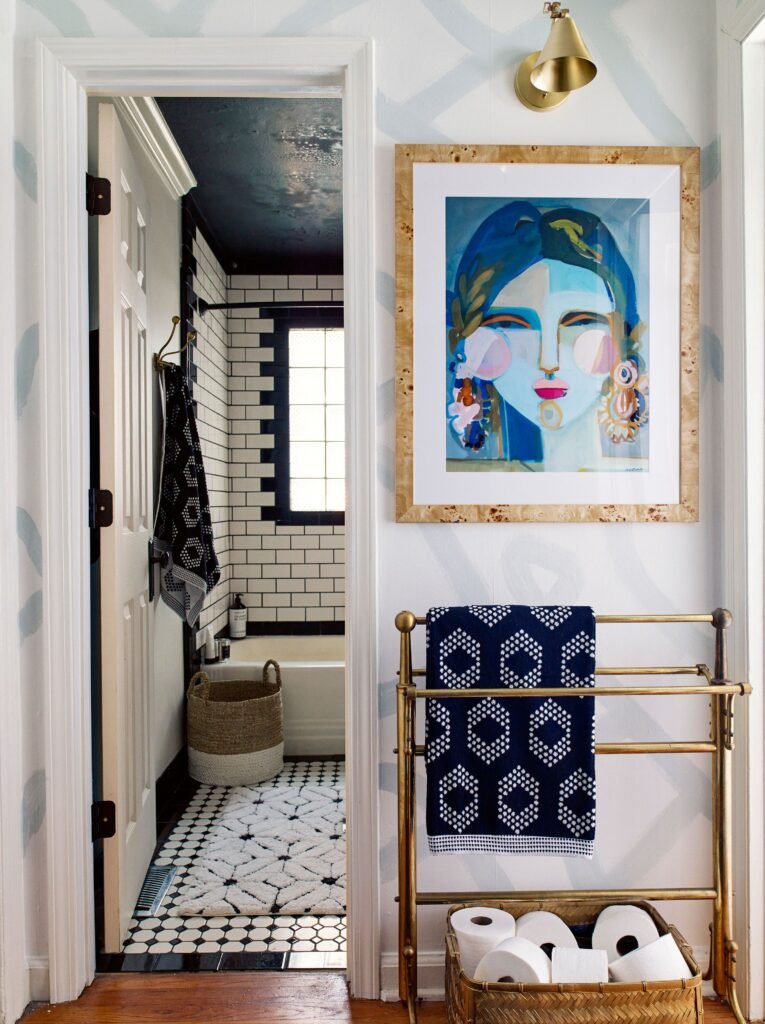
Bathrooms may not be the first place people think of for art, but they can hold small and charming pieces. Above the toilet, next to the mirror, or over a towel rack are all good spots. These areas benefit from prints, water-themed images, or even typography.
Humidity can be a problem, so choose framed art with protective glass or inexpensive prints that can be replaced easily. Adding art to the bathroom turns it from a plain utility space into a thoughtful room. Small touches here make a big difference.
9. Dining Room
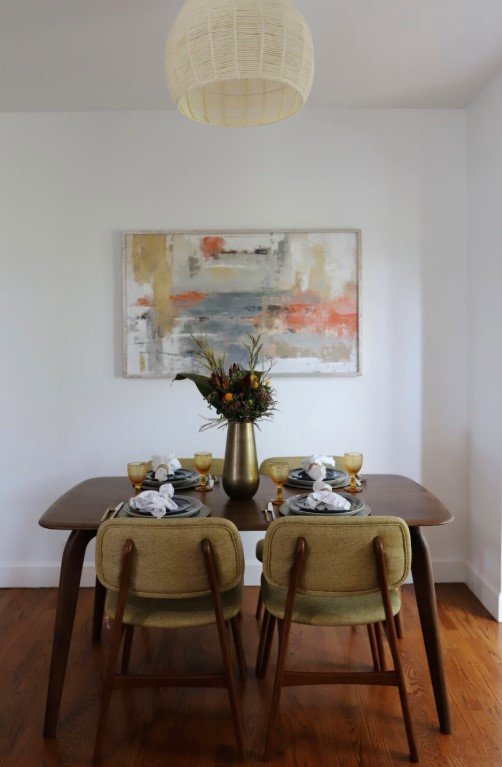
Art in the dining room helps set the mood for gatherings. A large canvas above a dining table looks elegant. A triptych (three connected pieces) works beautifully here too. The dining area often needs one strong focal point rather than many small frames.
Subjects related to nature, food, or abstract design often fit this space. They create conversation and help people feel comfortable while eating. Proper lighting, such as a chandelier or wall light, can highlight the artwork. Art here turns a meal into an experience.
10. Home Office
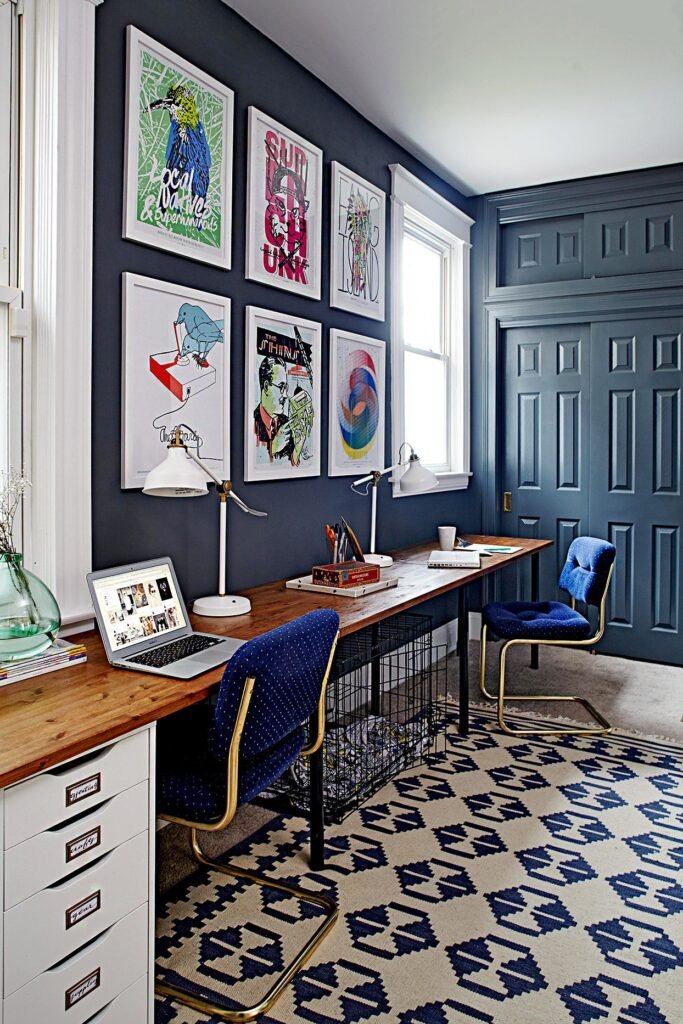
A home office benefits from inspiration and motivation. Hanging art above the desk or on the wall opposite the chair brings energy to the space. Quotes in stylish typography, calming landscapes, or abstract designs can make long work hours more pleasant.
Art here should encourage focus without being distracting. Bright colors might boost creativity, while black-and-white prints can support concentration. Hanging several small works above a desk can also break the stiffness of a plain wall.
11. Entryway
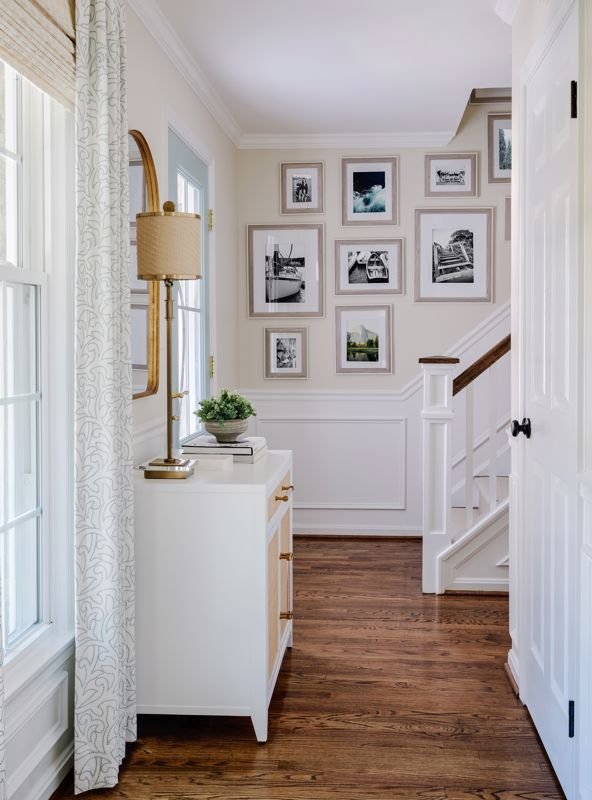
The first impression of a home often comes from the entryway. Art here greets guests and sets the tone for the rest of the house. A bold piece across from the door or above a small table works well.
Because this is a transition space, the artwork should be clear and simple. Abstract prints, nature scenes, or cultural pieces make sense here. Pairing art with a bench, coat rack, or mirror helps tie the entry together. The art makes the entry feel welcoming, not just functional.
12. Above a Bookshelf
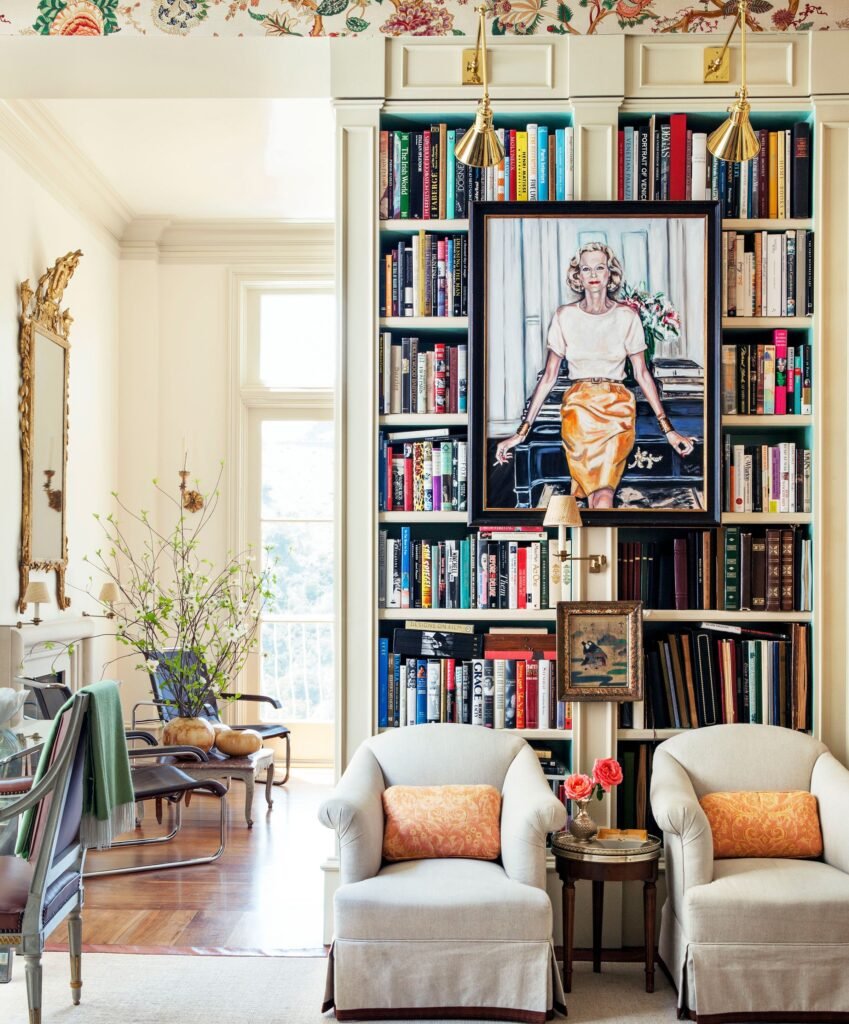
Bookshelves can feel heavy with only books. Hanging art above them lightens the look. It draws the eye upward and balances the vertical weight of the shelves.
Art does not need to be large here. A medium-sized canvas or a few small frames work fine. The artwork should complement the colors of the books and shelves. Prints with soft tones or line drawings often look best. Together, books and art make the area feel cultured and complete.
Conclusion
Art transforms walls into expressions of personality and taste. Every room offers at least one perfect place to display it. Above sofas, beds, fireplaces, or bookshelves, art frames the furniture and gives balance.
Hallways, staircases, and entryways turn into galleries where stories unfold. Even kitchens and bathrooms gain warmth and style with thoughtful pieces.
The best spot for art depends on balance, proportion, and the feeling you want in a room. A single bold piece can command attention, while smaller collections can create rhythm and interest. With these twelve ideas, any home can feel more complete, welcoming, and full of life.

